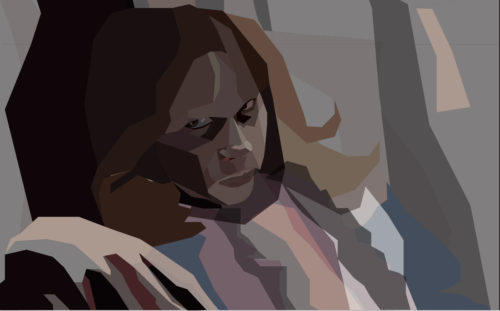Hard to believe “The Exorcist” is now 40 years old! The movie that shocked audiences around the world and spawned a slew of imitators is just as terrifying as ever. Today, we have our guest correspondent Alex Smith joining us with his take on the movie that changed the face of horror forever.

“The Exorcist at 40”
-Alex Smith
Most horror fans will tell you the same thing: “The Exorcist” is probably the single most important horror film ever released. Some of them might even try to convince you that you’ll be hard pressed to find one that stands up to the scare factor of the classic itself.
Debuting in 1973, “The Exorcist” is still the only movie in the horror genre to have been nominated for an Oscar for Best Picture. Ever. Add that to the handful of iconic scenes recycled from this movie through the history of the genre and you have a picture that isn’t easy to challenge on the top of the throne of horror.
Historically, films in the horror genre prior to “The Exorcist” had tended to fall on the side of b-film production units and weren’t taken very seriously by general audiences. “Rosemary’s Baby”, released in 1968, began pushing the idea of horror into the public sphere, while tackling issues that were less superficial and solely gore based, but it wasn’t until director and film auteur William Friedkin adapted “The Exorcist” that the genre realized its full potential.
Based on the William Peter Blatty book and adapted to screen by him as well, the film tells the story of a young girl possessed by demons and the attempts of two priests to exorcise her ghosts at the urging of the young girl’s mother. Forcing audiences and critics to rethink the idea of horror was no easy task, but that’s exactly what Friedkin managed to do with “The Exorcist”. Through his splendid use of his cast and their strong performances, the film was nominated for an unheard of 10 Academy Awards.
In addition, the interesting backstory of the making of the “The Exorcist” still makes horror fans shrug and wonder if the film wasn’t cursed from the start of production, which was shrouded in tragedy and mystery on and off the set for the cast and crew.
Max von Sydow’s brother died a week following Max’s arrival in New York for taping scenes as Father Lankester Merrin.
Then one week following the taping of his scenes for the film and just a month before its release, Jack MacGowran, who played Burke Dennings, died of influenza.
Jason Miller’s son was hit by a motorcycle and nearly killed. While filming the scene where she is thrown violently across the room as she approaches her child, Ellen Burstyn suffered a permanent spinal injury after landing on her coccyx. Legend holds that a gaffer on set lost a toe and a carpenter somehow cut off a thumb. With a laundry list of problems like that, it’s no surprise that many horror fans still consider “The Exorcist” a cursed production.
But deeper than the intrigue of the surface level excitement and fear induced by “The Exorcist” are the religious themes that the film really draws its value from. The film elevated horror as a genre not just because of its visual splendor, but because, unlike many horror films before, it actually gave viewers plenty of ideas to think about. How do we relate to religion and the unknown? How do we really live with ideas like the devil and evil infiltrating our world in a tangible way? What does Linda Blair’s portrayal of Regan MacNeil say to us about how we view purity in our society? What would we do to save that purity?
These questions are just the start of what Friedkin begins to propose in “The Exorcist” and why it remains a great film today; we can constantly find something new to pull from the material. While many modern-day horror film fans and critics may argue that the film has lost its edge on a technical level, there is no denying that it still hits home emotionally and intellectually.
Author Bio: Alex Smith is a freelance entertainment blogger for www.directtvdeal.com and a horror film addict. He remains in good health despite the many small heart attacks he has had during his regular film screenings of classic horror films, particularly slasher flicks from the 1970s and 80s.
